Lyde Vale House
lyde Vale House - Little Lyde Villa
Lyde Lane
Little Lyde Farm was originally a medieval farmstead, located approximately where the open space on the north side of Lyde Road bounded by Sandringham Road, Balmoral Road and Howard Road is today. It was at the end of Lyde Road, indeed Lyde Road ended here until after the Second World War although a track, Lyde Lane, ran off eastwards across open fields.
As seen from the first map below, the Tithe Map of 1842, the parcel of land numbered 966 to the immediate west of Little Lyde Farm was simply a field. The 1846 Tithe Apportionment recorded that Parcel 966 was called Lyde Lane, it was owned by William Callen and occupied by George Frost. It was an arable field and measured exactly three acres. Little Lyde Farm itself was owned and occupied by John Tanner Whiteley Pitcher.
By the time of the 1888 Ordnance Survey map, a new house had been built. It was known variously (and more or less sequentially) as Little Lyde Villa, Lyde Vale and Lyde Vale House.
It was occupied by Albert William Thorne until his death, aged 48, at the beginning of 1890 at which time separate sales were held for both the house and its contents.
The details of the house sale (see Gallery) are interesting for the description of the house - "The Dwelling-house is pleasantly situate in its own ground, having lawn and shrubberies in front thereof, and is approached by a carriage drive with two entrances, and contains entrance hall, breakfast, dining and drawing rooms, servants' hall, kitchen, china pantry, larder, scullery (wherein is a good supply of water, both from well and rainwater cistern), front and back staircases and landings with linen cupboard and wardrobe fitted on ditto, and from which is access to the four principal bedrooms, W.C., and servants' room. Also capital dry and healthy cellars, stores, wine bins, &c in the basement, with staircase from hall and a rolling way from the yard. In the rear of the dwelling-house will be found gardener's cottage with four rooms, stable with three loose boxes, harness room with loft over, coach-house with loft over, outdoor W.C., large walled-in flower and kitchen gardens, nicely laid out with walks and planted with choice fruit trees, small orchard, with a close of rich pasture land, with stall for four cows, and a loft over in the said field, and two cottages; offices and gardens, situate adjoining the said premises."
Following Albert Thorne, the house was occupied by John and Elizabeth Mules, their son John and a servant who were all listed living at Lyde Vale in the 1901 census. By 1905, Oliver Joseph Rowles (who had originally farmed Great Lyde Farm) had retired to Lyde Vale House - as it was referred to in the 1911 census. Rowles and his wife Elizabeth left the house in March 1917 to move to Thornford, Dorset. The house was sold again in 1925. During the 1930s and 1940s it was the residence of commercial traveller Gordon Kenneth James England and his wife Freda.
Little Lyde Villa / Lyde Vale / Lyde Vale House was later turned into flats and demolished in the late 1970s or early 1980s.
MAPs
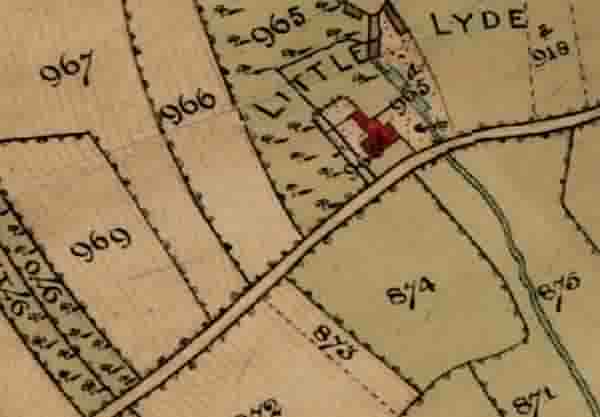
The 1842 Tithe Map showing Little Lyde Farm. Parcel 966, to its immediate west, would be the site of Little Lyde Villa / Lyde Vale House as evidenced by sale details shown in the Gallery below.

The same area shown on the 1888 Ordnance Survey map. By this time Little Lyde Villa had been built to the southwest of Little Lyde Farm.

On this 1901 Ordnance Survey Little Lyde Farm is the area shown at top centre and Little Lyde Villa (now known as Lyde Vale House) lies to its immediate southwest. Lyde Road was not built beyond this point until well after the Second World War.
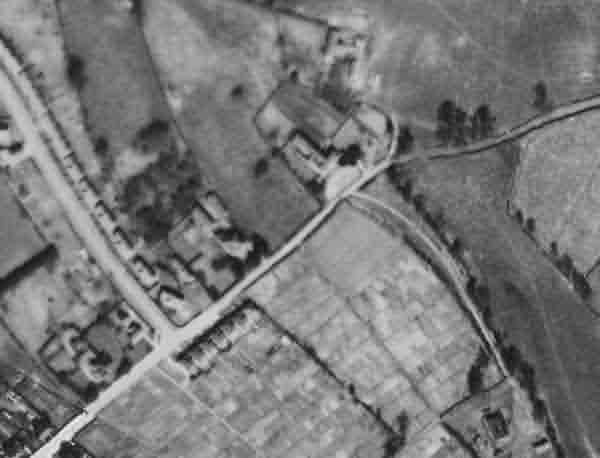
The 1846 aerial survey shows that by this time Rosebery Avenue had been built to the immediate west of Lyde Vale House.
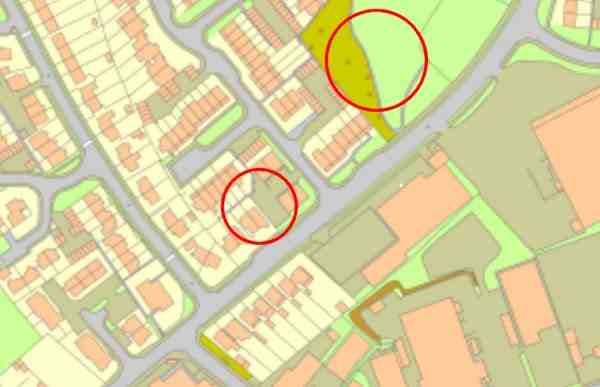
The modern map of the area shows the location of Lyde Vale House as the lower circle, and Little Lyde Farm's location as the larger circle.
gallery
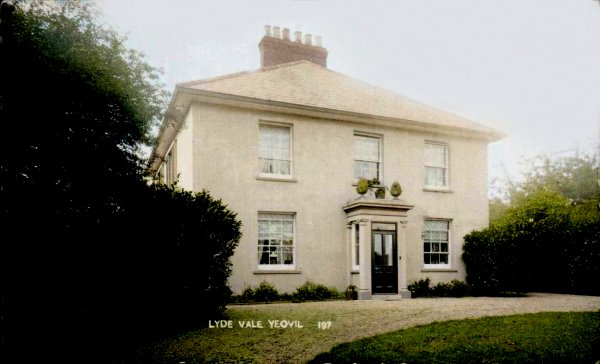
The front elevation, facing Lyde Road, of Lyde Vale House, in a colourised photographed, probably of the 1920s.
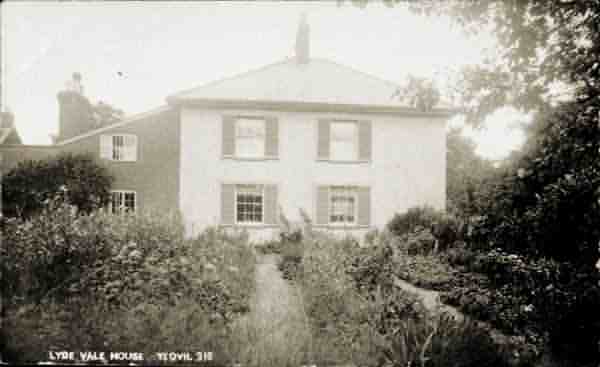
The side view of Lyde Vale House, again photographed in the 1920s from a position in the garden that would shortly be built on with the houses of Rosebery Avenue.
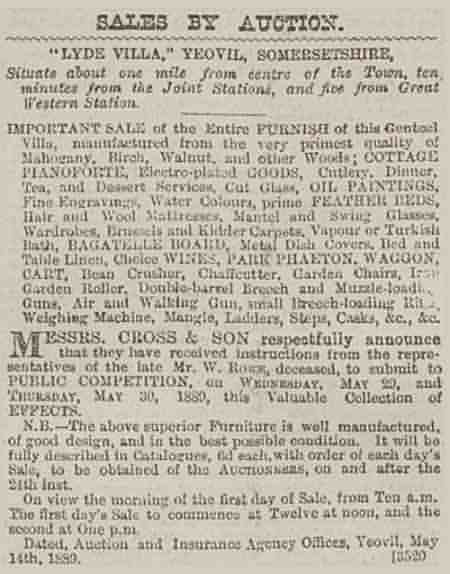
An advertisement for the sale of the furniture and contents of Lyde Villa from the 24 May 1889 edition of the Western Gazette.
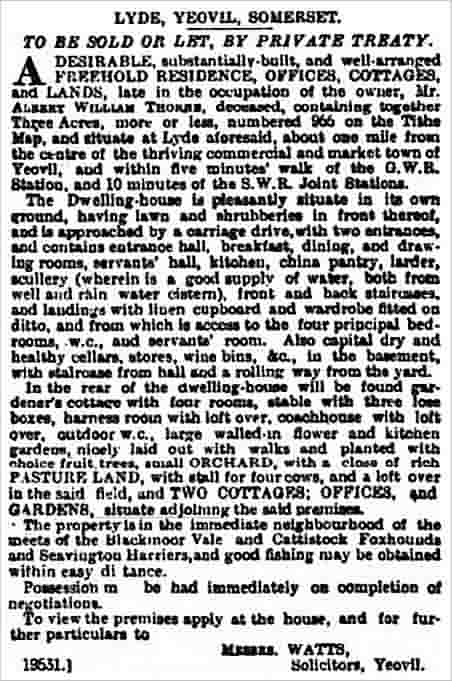
An advertisement for the sale of the house itself in the 2 May 1890 edition of the Western Chronicle. Although the house is not mentioned by name, the fact that it is described as "numbered 966 on the Tithe Map" it can only refer to Lyde Vale.